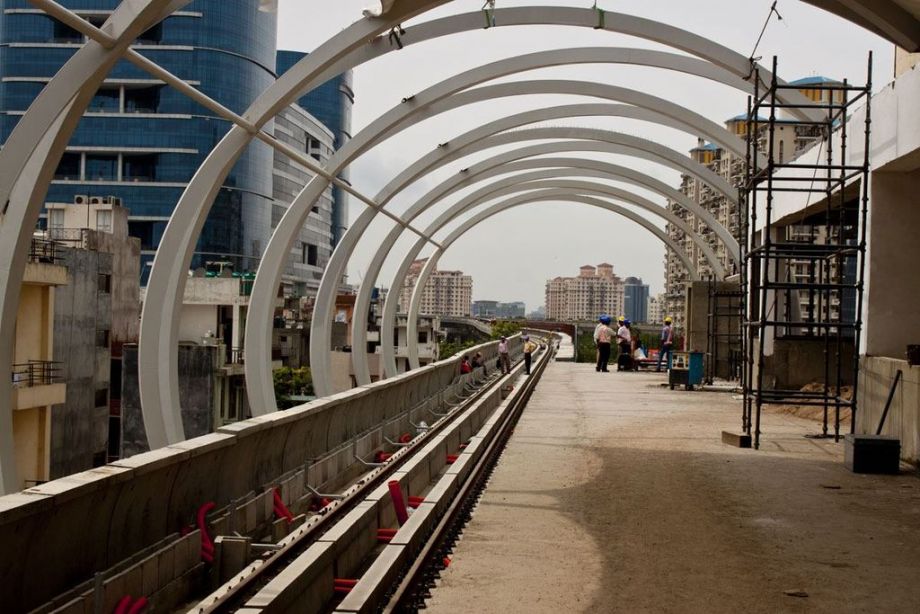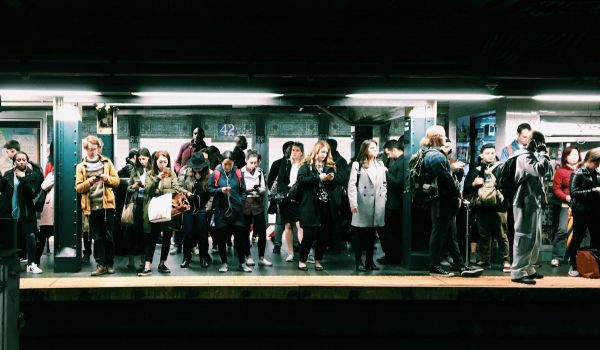This is the first installment in what will hopefully be a weekly roundup of new, newsworthy transportation projects around the world. This week we’ll review projects in India, Germany, Sweden, the UK and Houston, with an emphasis on novel ideas.
Private rail comes to India
The New Delhi suburb of Gurgaon, a free market utopia/dystopia, now has its own rapid transit line. The 5.1-kilometer, six-station Rapid MetroRail line opened Thursday and offers a free interchange between the broader Delhi Metro system. In keeping with Gurgaon’s market bonafides, the system was built and will operate with private funds. India’s largest commercial real estate developer, DLF Limited, was a partner in building the line, which has already boosted property values at projects along its route by between 35 and more than 100 percent.
German tram on the cheap
The German city of Mainz is planning a tram line, which wouldn’t be all that interesting but for the cost: A minuscule €84 million for a full 15-stop, 9.2-kilometer extension. Translated into ‘Murican, that’s $113 million for 5.7 miles of new rail. (In comparison, Boston’s 4.5-mile Green Line extension clocks in at just under $1 billion.) By the looks of at least one rendering, the Mainz line will partially run along a route segregated from other traffic.
Tram-train convergence in Manchester
Germany, and especially the city of Karlsruhe, pioneered the idea of tram-train networks. That’s when light rail vehicles run on dedicated, largely preexisting railway lines outside of city centers, where land is plentiful, while transitioning to more tram-like lines in the core to serve a wider swath of the city. Manchester, in the U.K., is considering a tram-train network of its own, at a cost of £650 million (which includes a large 66 percent contingency, but excludes rolling stock costs).
The tram-train concept is now illegal in the U.S. due to Federal Railroad Administration rules against mixing light rail vehicles with heavy rail lines, but reform expected by 2015 may change things and open up possibilities for tram-train networks and other rail models stateside.
Bus reorganization proposed for Houston
Houston is thinking about redrawing its bus network to emphasize high-ridership routes over so-called “coverage” routes, or those that guarantee a minimum level of service, to wide, low-density swaths of the city. Switching from a 50-50 ridership/coverage service split to a 90-10 split could boost patronage by 25 percent, while a more modest 75-25 or 70-30 split would increase ridership by 12 to 15 percent. Houston is unique among U.S. cities for its lack of zoning (though parking requirements still remain), which means that high-ridership bus routes could, if there’s market demand, spark high-density, bus-oriented development — something that planners in zoned cities are often loathe to allow.
Hong Kong on the Baltic
Hong Kong’s MTR Corp., the semi-private owner of the city-state’s subway network, has found growth opportunities overseas. Sweden has mandated open access to its national rail network to encourage competition, and MTR will start service between the capital, Stockholm, and its third-largest city, Gothenburg, at the end of 2014. It has ordered six FLIRT train sets made by Swiss manufacturer Stadler, and plans to run 110 trains each week along the 455-kilometer corridor. Trains in Sweden currently top out at 200 kilometers per hour, which is the maximum speed of the FLIRTs.
The Works is made possible with the support of the Surdna Foundation.
Stephen J. Smith is a reporter based in New York. He has written about transportation, infrastructure and real estate for a variety of publications including New York Yimby, where he is currently an editor, Next City, City Lab and the New York Observer.

















